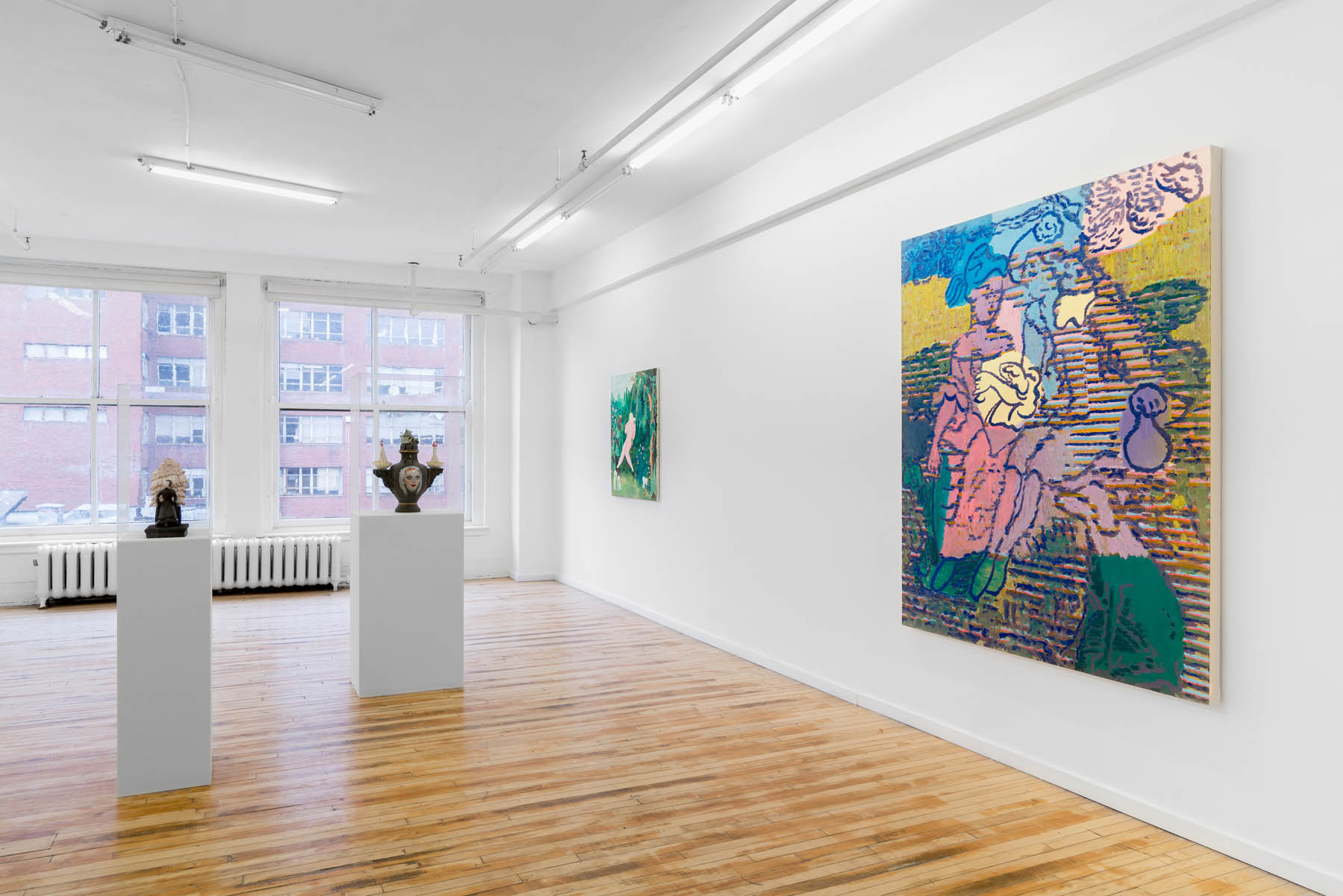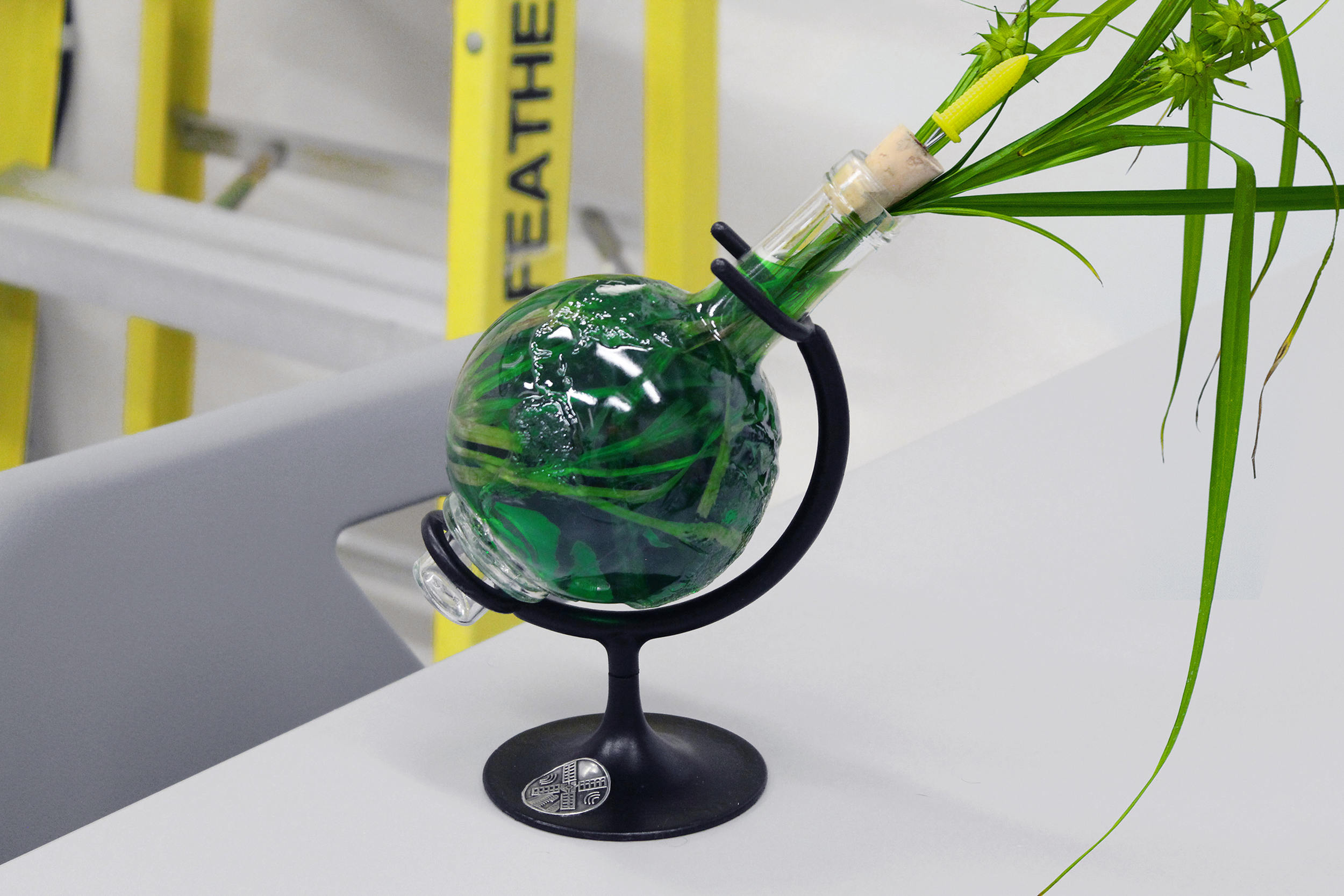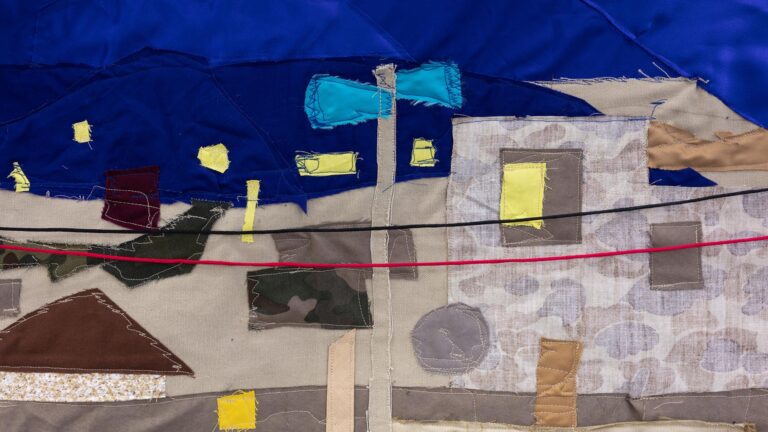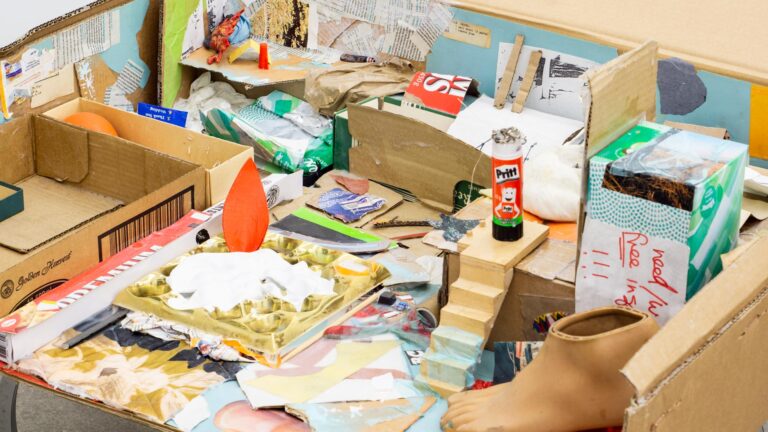Artists: Shary Boyle, Delphine Hennelly, Annelie McKenzie, Claire Milbrath
Exhibition title: Swan Song / Chant du cygne
Venue: Projet Pangée, Montreal, Canada
Date: February 27 – April 4, 2020
Photography: all images copyright and courtesy of the artists and Projet Pangée, Montreal
Montreal, February 19, 2020 — Projet Pangée is thrilled to present Swan Song, an exhibition uniting the works of Shary Boyle, Delphine Hennelly, Annelie McKenzie, and Claire Milbrath. Examining concepts of exuberance, theatricality, the frivolousness of Baroque and its overstated cousin, Rococo, this exhibition parallels the present through sustained illusions of abundance, heightened by our knowledge of inevitable decline. Through motifs of excess and gilded fantasy, Swan Song speaks to both historic and current destructive indulgences—the overripe becomes a metaphor for escape and avoidance, highlighting the dichotomic state of our times.
In Black Gold, a gouache drawing by Shary Boyle (Toronto, Canada), a half-dressed surrealist figure spills sensuously from a petroleum filled punch fountain. Set against a striking sunset, which perhaps only smog could enhance, Boyle’s drawing offers a sad but attractive spectacle, arresting the viewer between the desire to look and the helplessness to act. Boyle’s skillfulness in renewing allegories of the troubled human condition is also visible in her sculpture Sisyphus— here, a black ceramic figure pulls a wheelbarrow containing an impossibly fragile tower of porcelain lace. The stoneware cart teeters with instability as the figure steers her burden, guided by an uncertain but delicate purpose. Also playing with the concept of ornamental excess, Annelie McKenzie’s (Los Angeles, USA) paintings-on-thrifted-purses series shifts her work out of conventional male-dominated representational painting and into a feminized zone of craft-making. Through layers of paint encrusted with scraps of rhinestone, pompoms, lace, stickers, and glitter, McKenzie adds a third dimension to classical paintings, eagerly altering them to become lumpy and cheerful parodies of old masters’ works. With sharp-witted titles such as Defensive Nymph Capsule (after Angelica Kauffmann), Women’s Tricks on Painted Beads, or Jeans Purse Forcefield for Birthing (after Diana Mantuana), McKenzie references men in the appropriated imagery, but knowingly misattributes the titles to the artists’ daughters, wives or women painting during the same period. Her series serves as a reminder of unconscious bias and places it in a thought-provoking boundary where the work doesn’t entirely reject or celebrate the feminine construct, instead vacillating in-between.
For Delphine Hennelly (Brooklyn, USA) and Claire Milbrath (Montréal, Canada), iconographies from the 18th century become a point of focus for both of their bodies of work. Along with Poor Gray, Milbrath’s alter-ego, a group of fluffy and playful bichons frisés have been introduced into her most recent series of paintings.
Revisiting Jean-Honoré Fragonard’s famous painting The Swing (Hasards heureux de l’escarpolette, 1767) and one variant of La Gimblette (La Gimblette version de Munich, circa 1770), the artist swaps the typical young girl for her androgynous character. For Milbrath, removing the sexualized female body from the painting is a way to reinstate a practice free from hierarchical gender roles. With a penchant for hedonism and eroticism, Milbrath leverages pleasure to undermine gendered norms. For Delphine Hennelly, the ubiquitous couple and dog or couple in courtship become actors playing the roles of archetypes within their mundane existence. Slightly costumed, and enjoying domestic bliss, they meander on a stage set with bucolic, idyllic scenery that verges on the dystopian, yet somehow remain oblivious to the impending storm that the acidic yellows and fiery oranges suggest. Often working in series with slight variations between her paintings, the repeated figures allude to the glitch, the lenticular or pixelated, which slowly disintegrates to reveal an impending sense of disruption—an anxiety generously glossed over in a heap of saccharine colour.
Shary Boyle (Toronto, Canada) works across diverse media, including sculpture, drawing, installation and performance. Her work considers the social history of ceramic figurines, animist mythologies and folk art forms to create a symbolic, feminist and politically charged language uniquely her own. In 2017 her sculptures were featured in South Korea’s Gyeonggi International Ceramic Biennale, and the Phaidon, UK publication Vitamin C: Clay and Ceramic in Contemporary Art. She represented Canada with her project Music for Silence at the 55th Venice Biennale in 2013. Her work will be featured at a museum in a major solo exhibition opening February 2021.
Delphine Hennelly (Brooklyn, USA) received her BFA from Cooper Union in 2002 and her MFA from Mason Gross School of the Visual Arts at Rutgers University in New Jersey in 2017. A painter, drawer and occasional printmaker, Hennelly explores figuration primarily using the female form. She is a three-time recipient of The Elizabeth Greenshields Foundation Award. Recent exhibitions include a solo at Pt.2 Gallery (Oakland, USA) as well as a group show organized by James English Leary at Lisa Kandlhofer Gallery (Vienna, Austria) and a two-person show with Mimi Jung at Carvalho Park (New York, USA).
Annelie McKenzie (Los Angeles, USA) earned an MFA from California State University, Long Beach in 2013, and a BFA from the University of Calgary in 1997. The word “leftovers“could be used to describe both the subject matter and technique used in the work. Reference artists are sought out, those who have been left out of History and from which loose interpretations of their work are made by McKenzie using bits of leftover paint. Annelie McKenzie has exhibited at Fisher Parrish Gallery (New York, USA), Contemporary Calgary, (Calgary, Canada), Torrance Art Museum (Torrance, USA), VENUS LA (Los Angeles, USA) and other spaces throughout the USA and Canada.









































